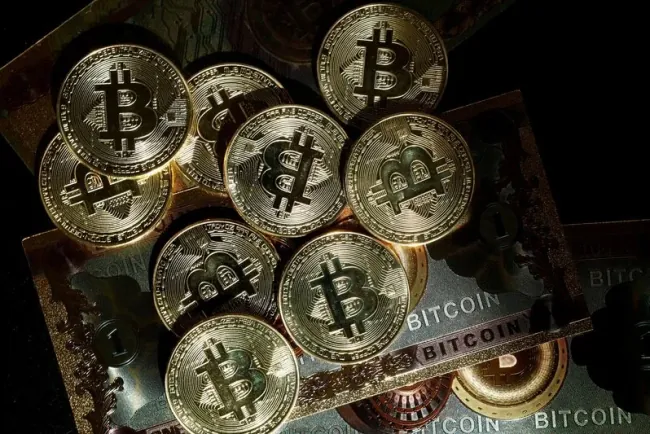Understanding February 2024 CPI Report: Trends and Impacts
nalyzing the February 2024 Consumer Price Index report, focusing on inflation trends, housing, core goods, and policies affecting the economy

Introduction
- Brief overview of the CPI report for February 2024
- The significance of the CPI and core inflation figures
Analyzing the February 2024 CPI Report
- Overview of the inflation rates in February 2024 and the past year
- The importance of the 6-month annualized changes for a clearer inflation trend
Core Inflation Breakdown
Core Goods
- Impact of post-pandemic supply chain normalization
- Recent changes in core goods prices and their economic implications
Housing
- The critical role of housing in the CPI and its recent trends
- Analysis of President Biden's FY 2025 budget and its impact on housing affordability
Non-housing Services (NHS)
- The role of labor-intensive services in core inflation
- Effects of wage growth and job market conditions on NHS inflation
Additional Factors Influencing Inflation
Energy and Food Prices
- Contribution of energy and retail gas prices to recent inflation trends
- Significant changes in food inflation, particularly in groceries
The Bigger Picture: From Core to Headline Inflation
- Integrating food and energy prices into the inflation analysis
- Visual representation of each category's contribution to inflation
Implications for Consumers and Policy
- The Biden-Harris Administration's efforts to address inflation
- Long-term economic outlook based on current inflation trends
Conclusion
- Recap of key findings from the February 2024 CPI report
- The potential economic trajectory based on current and projected inflation trends
FAQs
- What is the Consumer Price Index (CPI)?
- How does core inflation differ from headline inflation?
- What impact do housing costs have on overall inflation?
- How are food and energy prices factored into the CPI?
Introduction
The February 2024 Consumer Price Index (CPI) report reveals insightful trends about inflation, offering a snapshot of the economic landscape. With inflation at 0.4 percent for February and 3.2 percent annually, the data also highlights a 3.8 percent core inflation rate over the last year, excluding volatile food and energy prices. This analysis explores the CPI's nuances, emphasizing core inflation components and their broader economic implications.
Analyzing the February 2024 CPI Report
The February 2024 CPI report indicates a nuanced picture of inflation, with a 0.4 percent increase in February and a 3.2 percent rise over the past year. Core inflation, which provides a clearer view of the inflation trend by excluding food and energy prices, mirrored this monthly rate and stood at 3.8 percent annually. The use of 6-month annualized changes offers a balanced perspective on recent developments and underlying trends, revealing a 3.2 percent increase in overall prices and a 3.9 percent rise in core prices.
Core Inflation Breakdown
Core Goods
The normalization of post-pandemic supply chains has led to a significant easing in goods inflation. February saw a modest 0.1 percent increase in core goods prices, with a 1.5 percent decrease over the past six months. This reversal from double-digit inflation during the pandemic marks a critical source of disinflation, highlighting the dynamic interplay between supply chain normalization and demand shifts.
Housing
Accounting for a significant portion of the CPI, housing inflation has seen a notable shift. With over a third of the total index weight, housing costs rose by 0.4 percent last month, indicating a slight deceleration. This section delves into the long-term supply and demand challenges in the U.S. housing market and the potential impact of President Biden's FY 2025 budget proposals on affordability and housing stock.
Non-housing Services (NHS)
The NHS category, encompassing labor-intensive services excluding housing, shows a complex interaction with wage growth and job market conditions. Last month's 0.5 percent NHS inflation, a decrease from January's 0.8 percent, reflects these dynamics. This section explores how wage-sensitive services contribute to core inflation and the implications for real wage gains.
Additional Factors Influencing Inflation
Energy and Food Prices
Energy prices, particularly retail gas, have recently exerted downward pressure on the overall inflation index. Conversely, food inflation has seen a marked decrease, especially in grocery prices, contributing to disinflation. This analysis examines the roles of energy and food prices in shaping the current inflation landscape.
The Bigger Picture: From Core to Headline Inflation
This comprehensive analysis integrates food and energy prices to transition from core to headline inflation, providing a holistic view of the inflationary pressures and their distribution across different categories.
Implications for Consumers and Policy
The article concludes with a discussion on the Biden-Harris Administration's strategies to mitigate inflation and the potential long-term economic outlook based on these interventions and current trends.
Conclusion
The February 2024 CPI report offers valuable insights into inflation's current state and trajectory. By dissecting core inflation components and considering the broader economic implications, this analysis provides a foundation for understanding future economic conditions.
FAQs
This section answers common questions about the CPI, core versus headline inflation, and the impact of housing, food, and energy prices on inflation.
Encouraging Further Exploration
For more in-depth analyses and updates on economic trends, visit Kiksee Magazine, your go-to source for reliable economic insights and policies.
What's Your Reaction?






















